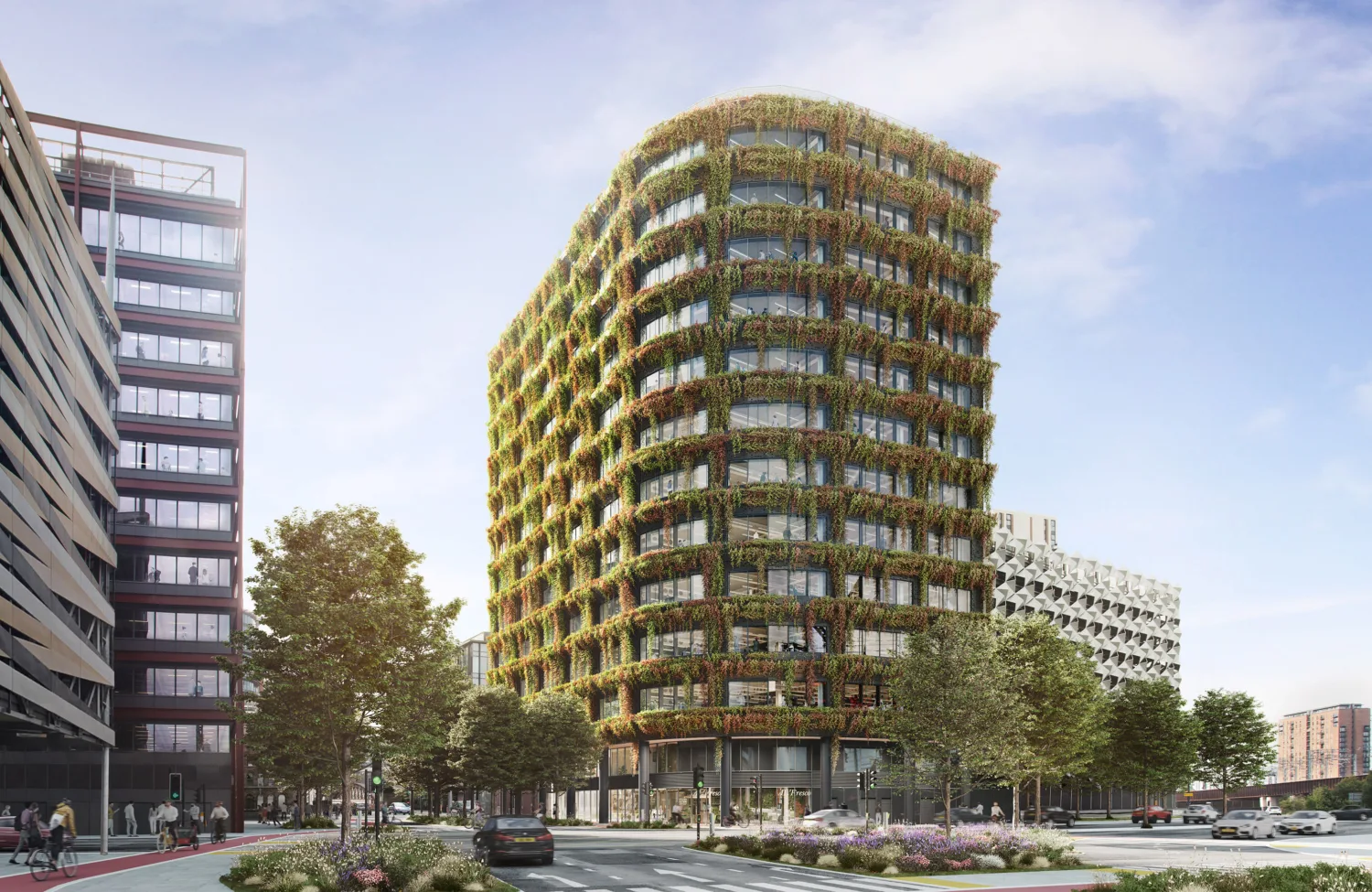Getting the world’s buildings to net-zero carbon
作者

Robin Pritchett
查看个人简介Originally published in The Times Raconteur Sustainable Business Report.
Engineering design is creating positive pathways to solve the biggest of all climate change challenges
“$326tn the estimated value of real estate on the planet, none of which is net zero carbon”
Savills Impacts, 2021
Substantial gains
Decarbonisation is now a fundamental requirement of an organisation’s existence. The good news is that it is also a route to improved returns on investment when buildings function efficiently, attract premium tenants and ensure the value of building stock is retained and enhanced.
“A significant part of the overall global emissions footprint comes from housing and commercial properties, so this is an area where we need to make substantial gains fairly quickly in order to meet our net-zero carbon targets,” says Robin Pritchett, Building Performance Services lead at Cundall, a leading multidisciplinary engineering consultancy that specialises in improving the performance of existing buildings and creating innovative design for new generation construction.
“We know every building is capable of a net-zero carbon pathway. For us, it is a question of working with every-one concerned and bringing our expertise to bear. It is very rewarding when you start looking at the data and see tangible results because of changes we have implemented.”
Environmental, social and governance (ESG) targets and new government energy efficiency ratings systems are also placing demands on corporations to reduce greenhouse gas emissions, water consumption and waste to landfill volume across their building portfolio. Cundall has been working on projects around the world, assisting asset owners, asset managers and major tenants with multidisciplinary design and building performance services to ensure they can take the high-performance road.
One of these major tenants Cundall is working with is Legal & General Investment Management (LGIM), which has an ambitious strategy to reach net zero across its 76 million square-foot real estate portfolio by 2050 or sooner. Cundall is helping develop net-zero audits and implementation plans for LGIM’s building stock, then designing the interventions.
“We are witnessing a huge growth in the commitment to decarbonisation from owners and investors,” adds Pritchett. “With clients like LGIM, we are seeing a desire to go beyond minimum requirements, with clients making a real investment to future-proof buildings, protect assets against climate change and create long-term value and performance across their portfolio.”
This groundswell is strengthened by the realisation that to continue with ‘business as usual’ poses the real threat of asset stranding as the market shifts.
“Large occupiers, particularly multi-nationals, have their own ESG commitments and they are not going to sign up for buildings that aren’t net-zero carbon or on a pathway to net zero. Investors want to maintain their asset values, which are partly driven by what people are willing to occupy,” says Pritchett.
“80% of the buildings that need to be decarbonised are already built”
UKGBC, 2021
Engineering opportunities
Retrofitting a building that was designed and constructed with limited concerns for its carbon footprint is where Pritchett and the Cundall team see engineering opportunities.
Even the perceived quick wins, such as replacing old boilers with highly-efficient electric heat pumps, pose complex engineering challenges to effectively integrate these into existing systems whilst maintaining the building’s function and setting it on a path to net-zero carbon.
“The initial challenge is understanding the building and its systems,” says Pritchett. “We are fortunate because we have a breadth of engineering expertise from building physics to the detailed engineering of pipe systems and valve arrangements. You need all those skills and the knowledge of different disciplines to provide a coordinated answer. Once you’ve got that engineering understanding then you can really get to work.
“Often you can identify some straightforward signals of inefficiency – one client we worked with had their building’s heating and ventilation coming on every Saturday because its systems had been scheduled for a one-off event and not switched back. We can make 10% to 15% energy savings improvements just by managing assets more efficiently before we move into fundamental changes.”
A blueprint for change
Cundall is at the forefront of net-zero carbon design which is forming a blueprint for industry, clients, developers and peers to learn from and collaborate for a brighter, more sustainable future. It is committed to achieving net-zero carbon design on all its projects by 2030 and confirmed that it will no longer work with clients who don’t share its vision.
“This is a very demanding and challenging sector, but the need is crystal clear from a business and ethical standpoint. The positive news is that industry is moving forward and putting more weight and urgency behind the push to net-zero carbon,” says Pritchett.
“We need everyone to wake up to the scale of this challenge. It is central to combatting climate change but does not seem to be on everyone’s radar at the moment. Flying and driving get a lot of press coverage, but buildings get almost none.
“Engineers are problem solvers and getting to net-zero carbon is a challenge we welcome. We need to work together to achieve this.”
Helping Kew’s iconic Palm House reach net zero
Royal Botanic Gardens, Kew has appointed Cundall as decarbonisation consultants on the restoration of the heritage-listed Palm House. Protecting and conserving this impressive Victorian glasshouse, while also helping it achieve net-zero carbon is a rewarding challenge that will set the standard for how we restore other heritage-listed buildings in the future. The restoration will be respectful of the building’s heritage but will also improve the building’s operation, deliver improved internal conditions for the plant life and upgrade the energy systems for the future.




